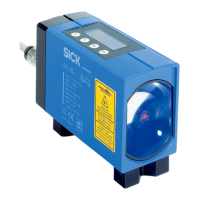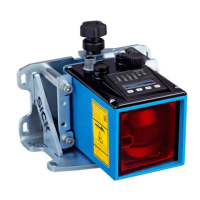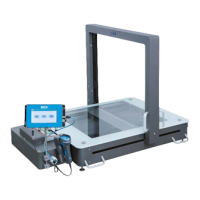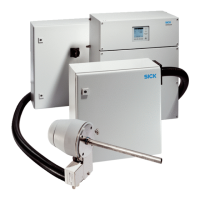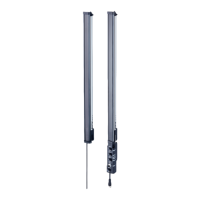54 GMS800 · Operating Instructions · 8013025 V1.2 · © SICK MAIHAK GmbH
Maintenance
Subject to change without notice
8.4 Leak tightness check of sample gas path
8.4.1 Safety information on gas leak tightness
8.4.2 Test criterion for gas leak tightness
● At the most, 10 ml/min (0.6 l/h) may escape from the internal gas path of the gas ana-
lyzers (gas inlet to gas outlet) with an overpressure of 100 kPa (1 bar) against the ambi-
ent air pressure. The device is classified as leaky when the leakage rate is higher.
● Recommended test interval: Max. 6 months
8.4.3 Simple test method for gas leak tightness
Test equipment
For a simple test, you need
● A compressed gas cylinder with adjustable pressure reducer (recommendation: Nitro-
gen)
● A »washing bottle« with two hose connections (
→
p. 55, Fig. 10).
– The washing bottle must be able to withstand the test pressure (1 bar) and be
closable gas-tight.
– The hose leading (or a suitable tube) into the water should have an inner diameter
of 5 mm (outlet opening diameter).
– Plain water can be used as filling. Only use enough water so that no water can
escape via the gas outlet of the washing bottle.
WARNING: Hazards through leaky gas path
● There is a risk to health when the gas path is leaky when using toxic sample
gases or sample gases hazardous to health.
● If the sample gas is corrosive or can create corrosive liquids with water (e.g.
air moisture), there is a risk of damage to the gas analyzer and neighboring
equipment when the sample gas path is leaky.
● If the escaping gas is explosive or can create an explosive gas mixture
together with ambient air, there is a risk of explosions when the safety mea-
sures on explosion protection are not implemented.
● Measured values can be erroneous when the gas path is leaky.
If the gas path is determined to be leaky:
b
Shut off gas feed.
b
Put the gas analyzer out of operation.
b
If the escaping gas can be dangerous to health, corrosive or explosive:
Remove the escaping gas systematically (purge, suction off, vent) whilst
maintaining the necessary safety measures, e.g. for
– explosion protection (e.g. purge enclosure with inert gas)
– health protection (e.g. use breathing protection)
– environment protection.
Other test methods are also available - e.g. using a controllable mass flow rate
controller.
